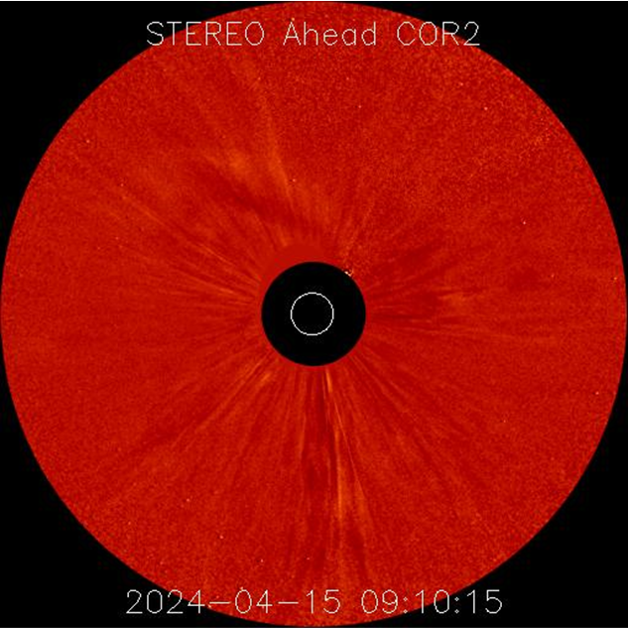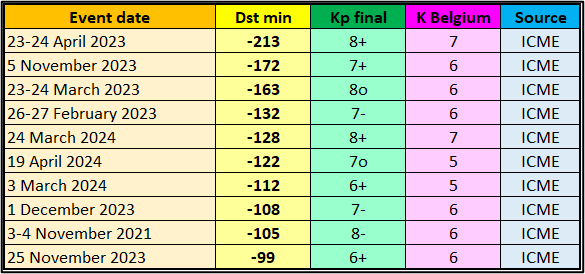Despite the high sunspot numbers and numerous M-class flares of the last few weeks, only few coronal mass ejections (CMEs) had an earth-directed component and even less created a decent geomagnetic storm. The sole strong geomagnetic storm (Kp=7) during the month of April occurred on the 19th. The source CME was faint and slow. The coronagraph on board of STEREO-A captured it while it was moving to the north and northeast on 15 April.

The table underneath provides the Top 10 of most significant geomagnetic events so far this solar cycle (SC25). It contains mostly events for which the Disturbance storm-time index (Dst - see the STCE Space Weather classification page for more info) reaches -100 nT or less. The table contains the date of the storm, the Dst (provisional values; Kyoto WDC), the final Kp (from Potsdam GFZ), and the K BEL index as recorded in Dourbes, Belgium. The last column gives the source of the disturbance, but in this case, all the geomagnetic storms had an interplanetary CME (ICME) as their source. It is expected that starting during the upcoming solar cycle maximum and subsequent declining phase of SC25, there's a good chance that the co-rotating interaction region preceding the high speed stream from a coronal hole (CH CIR; see this STCE newsitem at http://www.stce.be/news/269/welcome.html for more info on CIRs) will cause some noteworthy events that will stir intense geomagnetic storms (Dst < -100 nT). It is well-known that ICMEs can produce much stronger geomagnetic storms than CH wind streams and CH CIRs.

As can be seen, and ranked according to the provisional values of the Dst index, the severe geomagnetic storm from 23-24 April 2023 remains the strongest event so far this solar cycle. With -213 nT, it nests itself between the Top 2 of the previous solar cycle, the famous events of 17-18 March 2015 ("St-Patrick Day's storm") and 22-23 June 2015 ("Solstice storm") which had final Dst values of respectively -234 nT and -198 nT. The table also shows that there's some difference between the individual parameters, i.e. the highest Kp or K_BEL values do not necessarily connect to the storm with the lowest Dst values. This is of course because they are different geomagnetic parameters, with different groups of stations measuring different aspects of geomagnetic activity. Also, the geomagnetic conditions preceding the main storm plays a factor in this. The picture underneath shows polar lights over Lofoten in northern Norway, and was taken by Johny Goerend during the previous solar cycle minimum in 2020.
